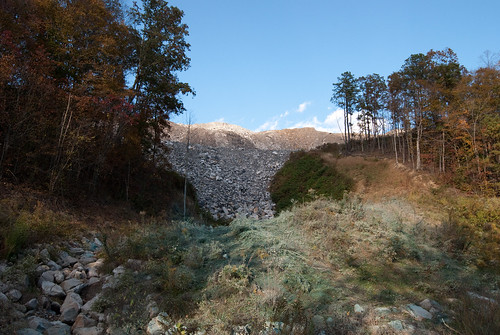In Washington, DC there exists a pot of money – nearly $2.5 billion – that could be used today to put Appalachians back to work repairing the environmental damage from abandoned mine sites. And yet, it's not being spent. The reason why is the usual suspect: politics. A recent article on the Daily Yonder looks into the Abandoned Mine Lands fund and why it's sitting idle: 
In the poorest part of the poorest region in America, there is nearly $2.5 billion of federal money waiting to be spent. The money, which flows into the Abandoned Mine Lands Trust, comes from taxes that coal companies pay to reclaim old and abandoned strip mines. “Reclaim,” in this context, means to refurbish and reforest the land, getting it as close as possible to its natural state before the land was mined. Additionally, the money is meant to “reclaim” the economy, paving the way for the region to move away from coal.
No one denies what that money could represent to central Appalachia, where in just the last 18 months over 5,500 high paying mining jobs have been lost in Eastern Kentucky alone. The problem is no one can agree on how to spend it. The longer it goes unclaimed, the less likely it is to help the region….
Spadaro suggests that the fund is dormant and is being used to prop up the federal deficit. “It’s a shame because the original intent of the AML fund was to do reclamation work and to improve conditions in the coalfields, not just for streams and forests but for communities as well. And instead of being used to do that, Congress has set it aside as a hedge against the deficit. And no one, it seems to me, has had the courage to point this out, even though there are many politicians who know what’s going on.”
Compounding the problem is that when the money does get spent, it's not typically in Appalachia. The funds are allocated according to current mining activity, despite the fact that it's called the Abandoned Mine Lands Fund. And as we all know, mining in Central Appalachia has dropped dramatically.
“So much of the mining happens out West now, and production is dropping dramatically in the Appalachian region,” Bailey said. “The formula, however, does not allocate the monies based on the need. Most of the need [to reclaim abandoned mines] is here. It’s in the Appalachian region.” In 2012, for example, the state of Wyoming received $150 million and used it on infrastructure, schools and conservation programs. To some, this is not what the money was intended for. It could be better spent on jobs that put laid-off miners back to work.
Bailey stresses that AML should help the Appalachian environment in the long term, and in the short term, it should help improve the Appalachian economy. To start, the fund could provide employment for laid-off coal miners. “I think it’s a perfect match between some of the skills that laid-off miners have and some of the jobs that are needed to do [remediation],” Bailey said. “You’re talking about a lot of jobs that have similarities with surface mining.”
Eastern Kentucky alone has lost over 5,700 mining jobs in the last two years, a statistic echoed throughout Central Appalachia. It's shameful that resources that could put some of those miners back to work right away is not being spent.
Photo of reclamation on the Hobet surface mine in West Virginia by Flckr user beelaineo, used under Creative Commons license.





